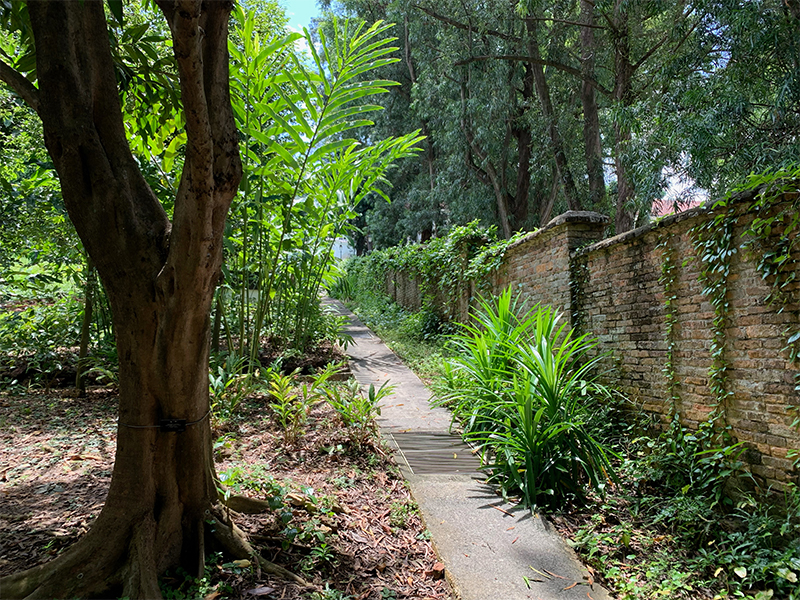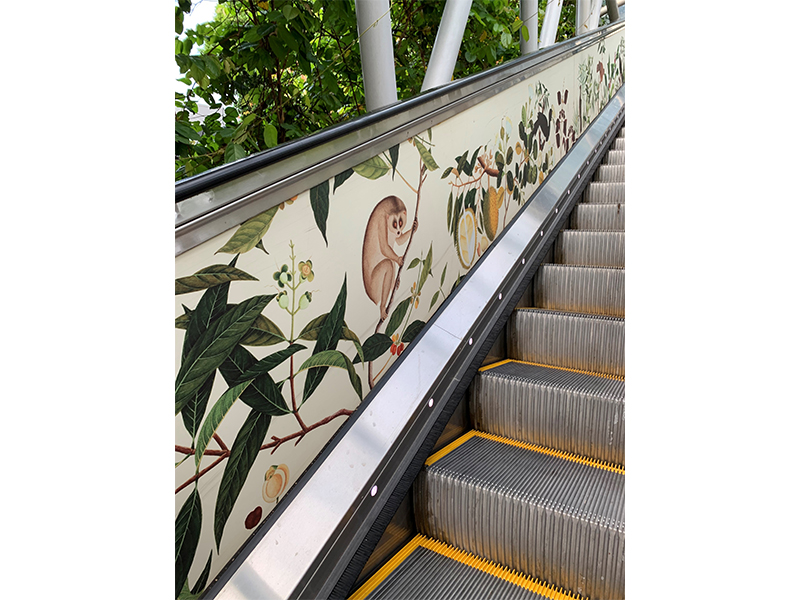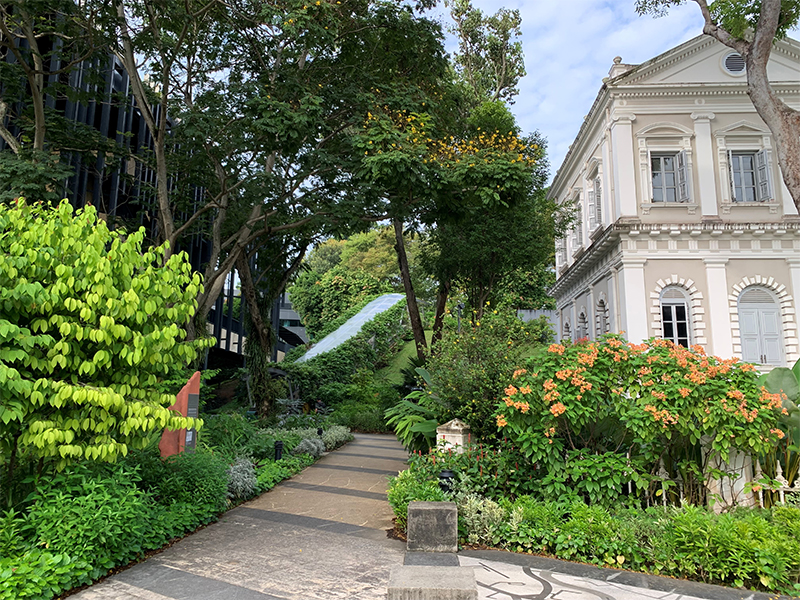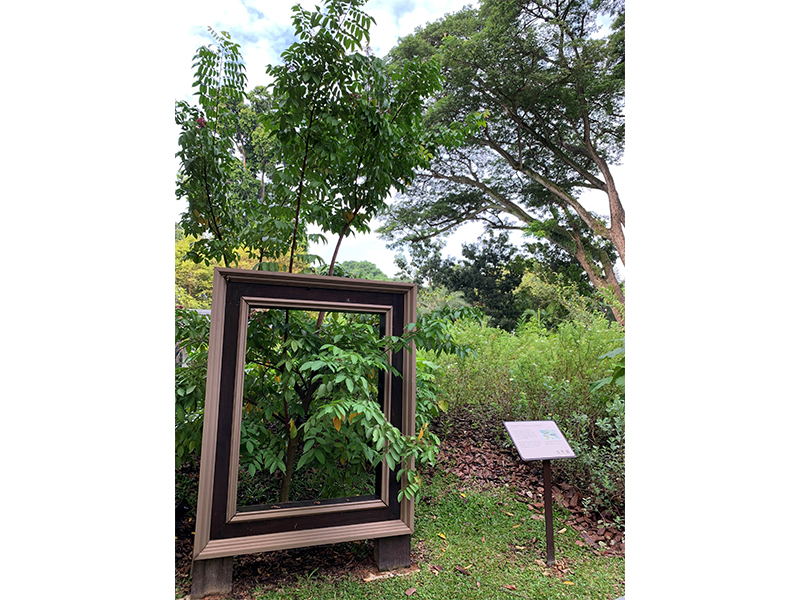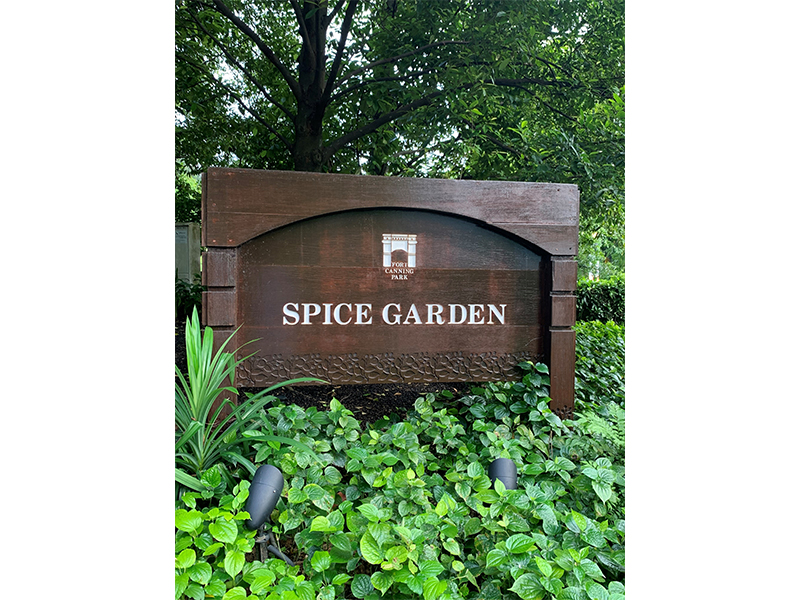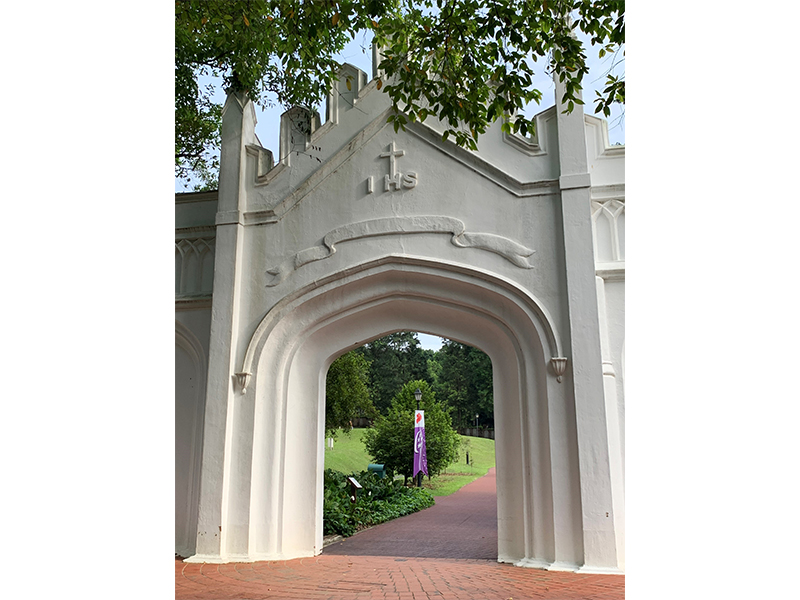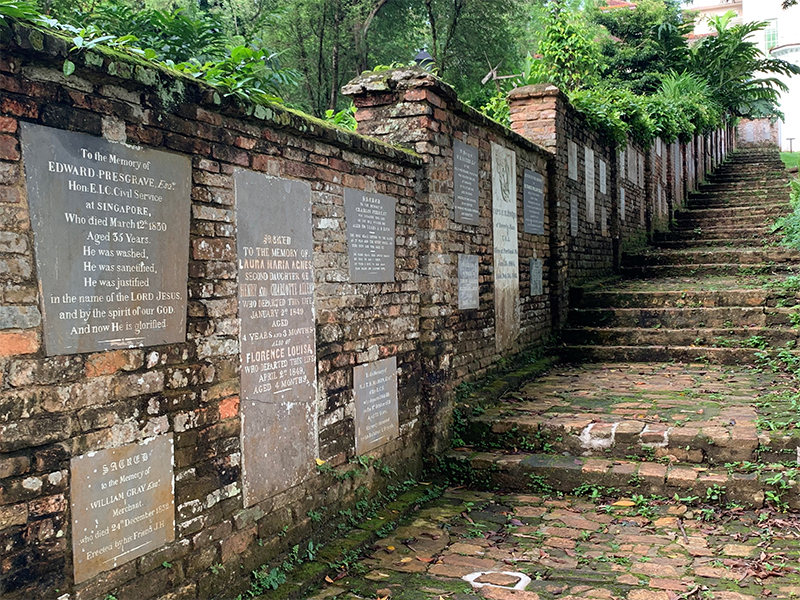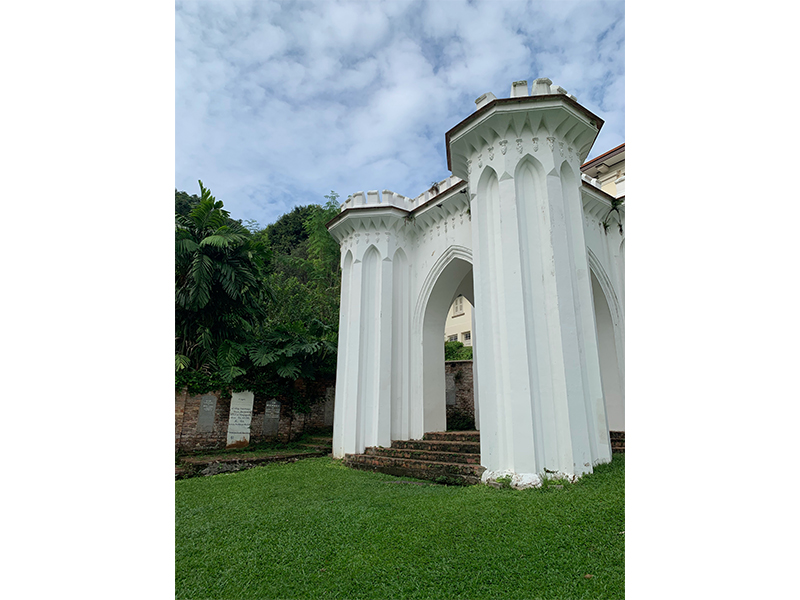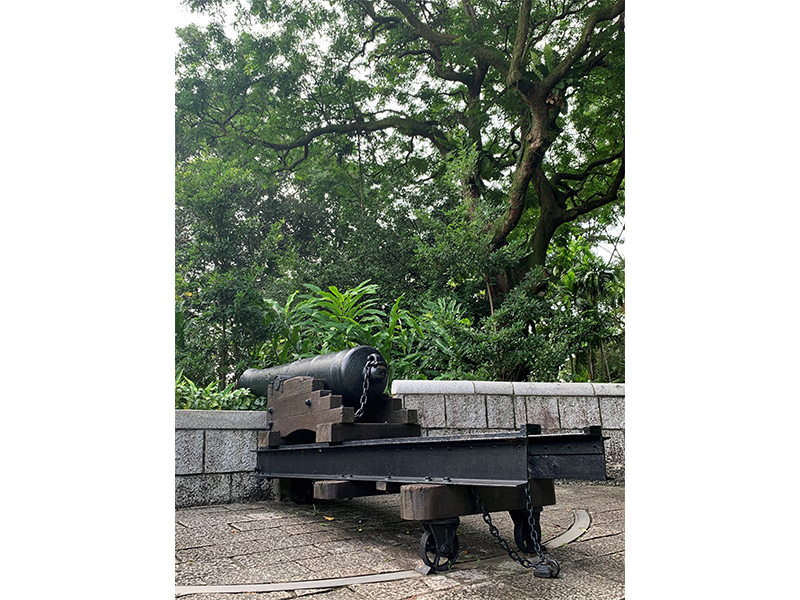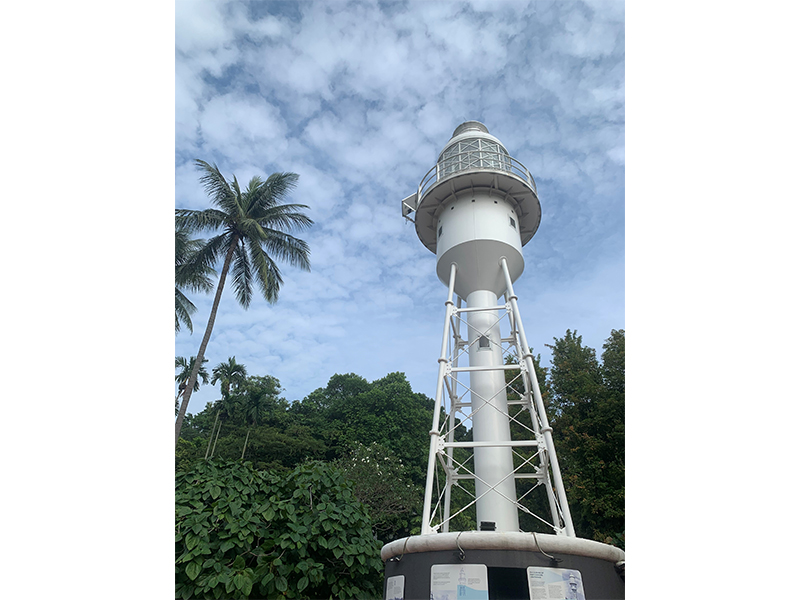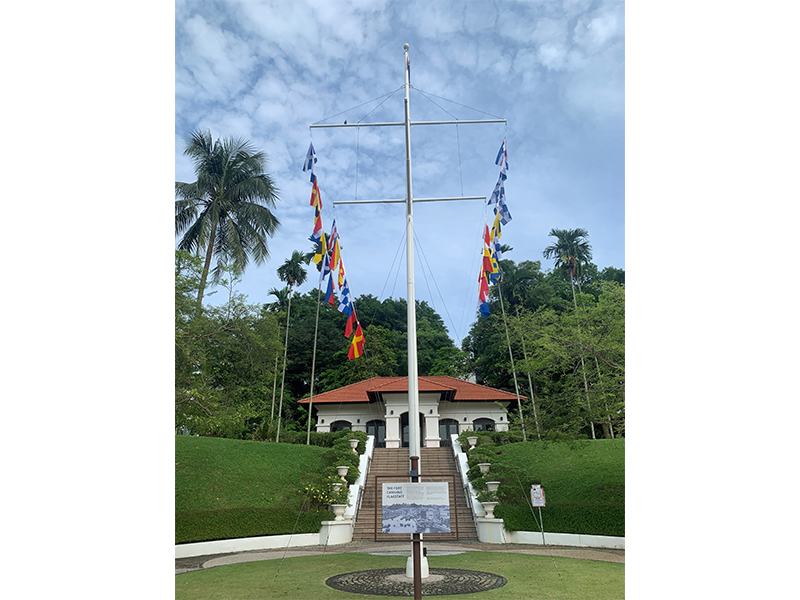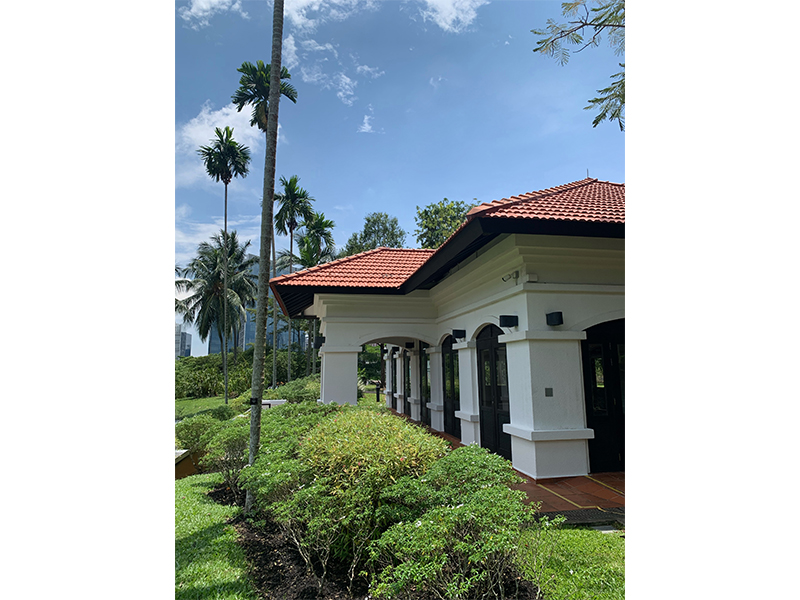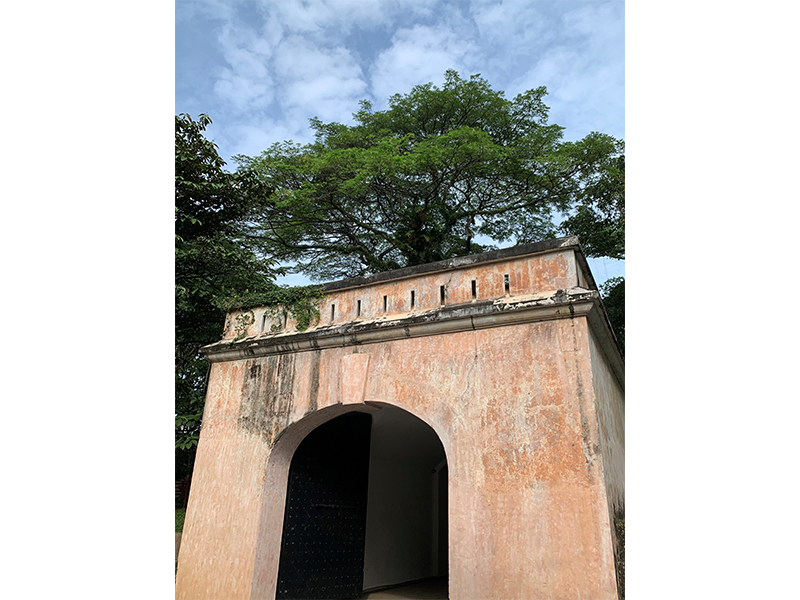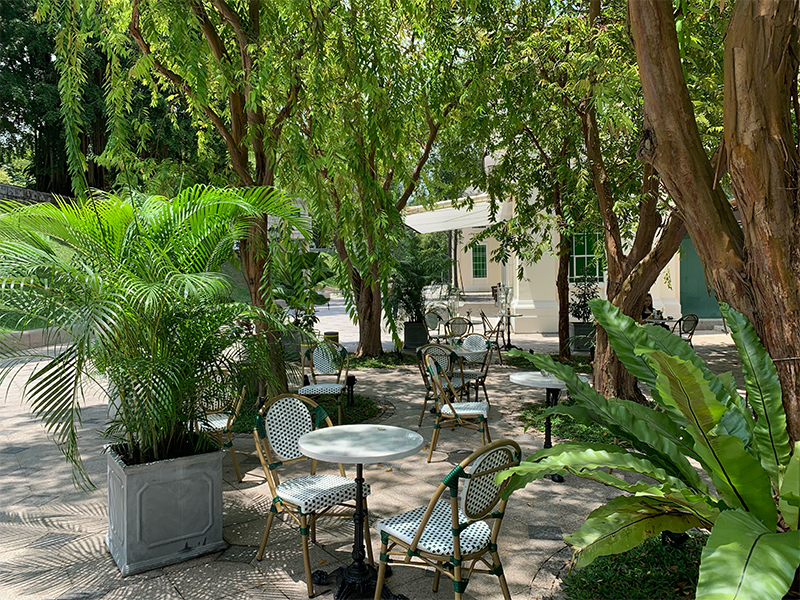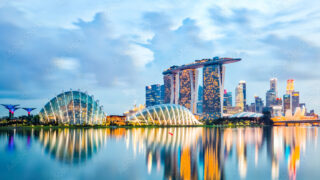CERI POWELL lives at the base of Fort Canning Park, so she knows its nooks and crannies well! Here she outlines some of the key historical features you will find on this walk in Singapore.
A short distance from the Padang and North Bridge Road is the tree-covered hill of Fort Canning Park; this has been a historical landmark for many centuries. This walk focuses on the 19th-century history of the hill, rather than the ancient history of the Malay Kings in the area, or the experiences during World War II.
Location #1
The walk in Singapore takes approximately 45 minutes. It starts by ascending the outdoor escalators to the left side of the National Museum near Bras Basah MRT. The escalator panels are covered in beautiful coloured sketches from the William Farquhar Collection, capturing plant and animal life in Singapore in 1820.
Location #2
At the top of the escalators is the Farquhar Garden. It uses wooden “picture frames” to focus on plants that were used as food or medicine in early Singapore; you’ll find everything from guava to starfruit.
Location #3
Keeping left along the red brick paving, then taking the first right, we enter the Spice Garden. Stamford Raffles encouraged the growing of exotic Eastern spices to cement Singapore’s position as a prominent trading hub. Here in the Spice Garden, a grove of nutmeg trees thrives. The nutmeg fruit splits open to reveal the brown nutmeg covered in a web (or “aril”) of red mace. Nutmeg and mace were hugely expensive 150 years ago. In fact, Orchard Road take its name from the nutmeg orchards that lined the lane and attracted rich merchants’ houses. The houses became shops, and eventually skyscrapers and Christmas lights!
Location #4
From the Spice Garden, turn right through the white Gothic gateway onto Fort Canning Green. This gate, designed by Charles Edward Faber, is one half of a pair marking the largest early Christian Cemetery in Singapore. Thirty percent of those buried were Chinese Christians. It was closed for burials in 1865; then, in the 1970s, after a century of increasing dilapidation, the gravestones were placed into the brick walls around the cemetery. It makes a fascinating walk in Singapore.
Location #5
Walk up the brick steps and look at the wall of gravestones on your left. These tell some sombre personal stories of settlers and seafarers alike. One is in memory of Esther Barnard; she was the daughter of William Farquhar and the great great-great-great grandmother of Justin Trudeau, the Canadian Prime Minister. Also, her child, Agnes, was the first British child to be born in Singapore.
Location #6
At the top of the rise is the striking white-coloured monument to the infant James Brooke Napier, who died at just five months of age. His father, William Napier, had served in Borneo with the first Rajah of Sarawak, James Brooke, hence the name of his baby son.
Location #7
Walk up to the left of the Fort Canning Centre, and take the path left past the black cannon. This “9-pound cannon” is a reminder of the military role of the hill, with Fort Canning being constructed in 1861. Unfortunately, the fort lacked a fresh water supply, which rendered it less than optimal, and it was demolished in 1907, ironically to make way for the reservoir on the summit of Fort Canning Park we see today.
Location #8
Walking along the flat tree-lined path with the CBD skyline to your left, after 400 metres three navigational structures appear. The first is the lighthouse, a replica of the first lighthouse on Singapore Island that stood here since 1902. The light was powered by a kerosene burner generating the equivalent of 20,000 candles and could be seen from 30 kilometres offshore!
Location #9
Even earlier, in the 1820s, the flagstaff was used to communicate with ships that were in Singapore harbour, or imminently arriving or departing. Look for the explanation as to how to “read the flags” and decipher the message they portray. The time-ball is near the flagstaff. It was used to signal the correct time to the townspeople, with the ball being raised at 12.55pm and dropped at 1pm precisely each day. All businesses and government offices could set then their clocks to a common Singapore time.
Location #10
The replica of Raffles bungalow, although his residence was built of atap palm and wood rather than stone and slates, retains the commanding view looking down High Street that Raffles would have enjoyed. We can imagine the tree-lined road to the beach and grand buildings including Old Parliament House and the glamorous Hotel d’Europe – although the present-day view to Marina Bay Sands is equally dramatic! High Street got its name from the fact that it wasn’t prone to flooding, and it was the first street in Singapore to be “macadamed”.
Location #11
Walk past Raffles House and take the highest, flat path round to the right. After 370 metres, the pinkish coloured Fort Gate appears. This is the only remnant of Fort Canning, and constructed to protect Singapore from sea attack. If you look behind one of the heavy black doors within the gateway, there is a secret metal grill door, open from 7am to 7pm. Climb the narrow stone steps for a 360-degree vantage point atop of the entrance gate.
I hope that this short walk has taken you back to a time in the 1800s when this hill overlooked a bustling town of horses, bullock carts, trishaws and tall ships in the harbour – truly the emporium of the East!
To return to the starting point, walk around Fort Canning Centre, down the central steps of The Green to the Farquhar Garden, then take the escalator down to the National Museum.
Check out the National Parks website or roots.sg for more information.
Read on for more hikes and walks in Singapore or places to escape the city!
Don't miss out on the latest events, news and
competitions by signing up to our newsletter!
By signing up, you'll receive our weekly newsletter and offers which you can update or unsubscribe to anytime.

